READY TO GET STARTED?
REQUEST A FREE ESTIMATE
Fill out the form below or call (888) 466-7849 for a free, no-obligation estimate.
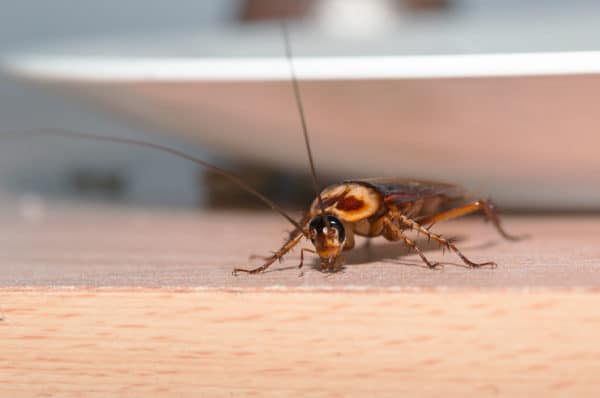
When cockroaches are spotted in your home several questions may run through your mind. The first one is most likely “Oh no,what do I do?” followed closely by “How do I get rid of them?” Once you get over the shock of having one scurry across your floor or countertop, several more questions may come to mind.
What attracts cockroaches? Cockroaches aren’t just attracted to dirty or cluttered houses. Roaches will come indoors in search of 4 things – food, water, heat, and shelter. While dirty or cluttered houses can provide an ample supply of food and shelter, clean houses can provide many of these necessities for roaches, as well. Appliances offer a source of heat so roaches are often found under or behind them. Leaky faucets or pipes can provide a water supply no matter how clean your home is.
Are cockroaches dangerous? The answer to this is a resounding yes. Cockroaches are known to carry bacteria that can cause illnesses in humans, such as salmonella, when it is deposited on your food or food prep surfaces. Roach excrement, shed body parts, eggs, and even saliva have been proven to trigger allergic reactions and asthma in affected people.
What do cockroaches look like? You may wonder why this is important. After all, a cockroach is a cockroach, right? Different species of cockroaches have different habits and require different treatments to completely eliminate a roach infestation from your home. While there are many different species of cockroaches worldwide, there are a few that are common to Georgia. Here’s how to identify each of them to help ensure you get the proper treatment.
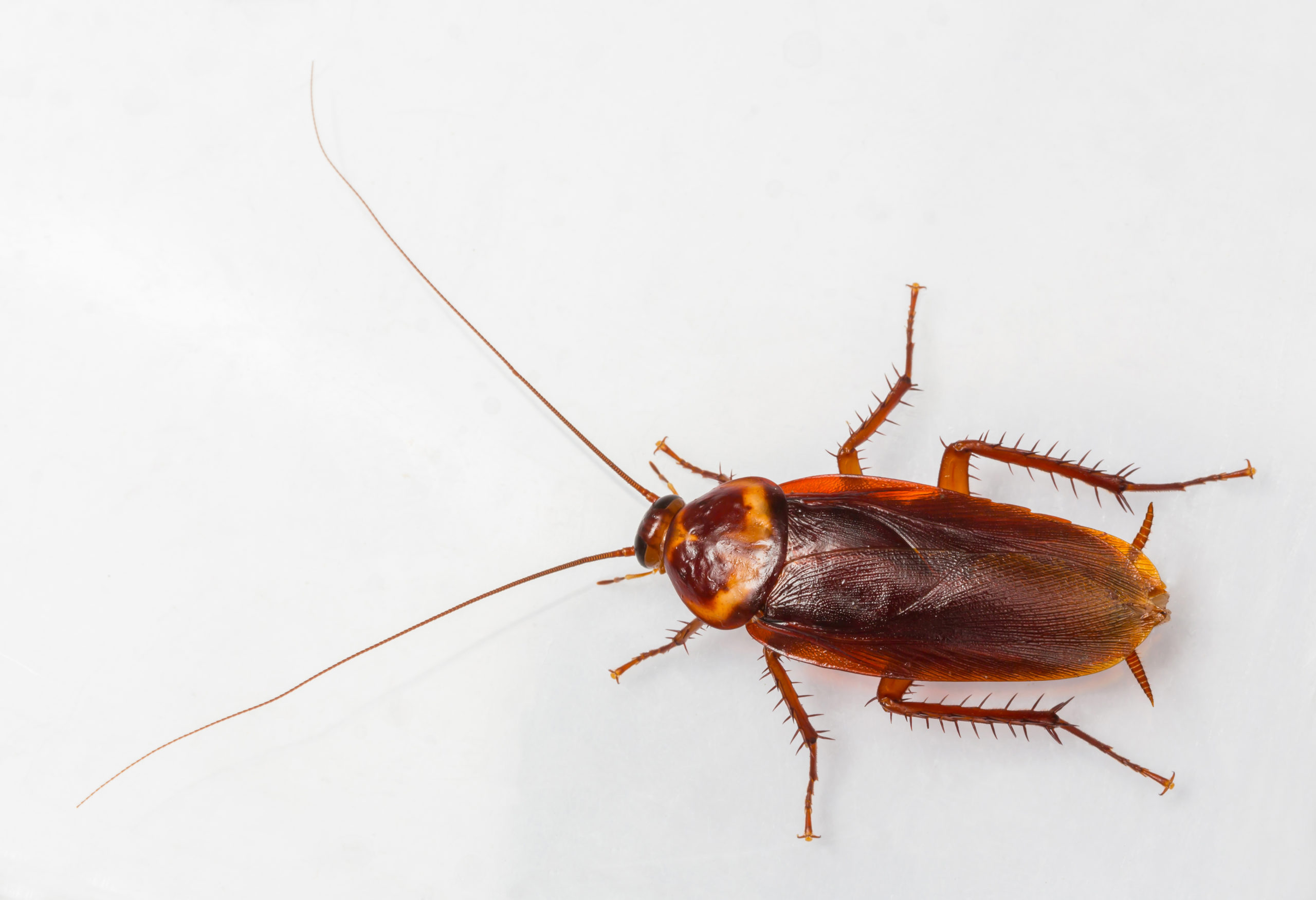
The American cockroach is the largest and most common cockroach found in homes in Georgia. These roaches are a chestnut to light brown color with light yellow bands around the shield behind their heads. They are large with adults approximately 2 inches in length. Male and female American cockroaches have wings and they are capable of flying short distances. This species can live up to 2 years. They are active at night and are often found around water sources like pipes, sewers, and basements. They are also commonly found in kitchens and bathrooms. They often cohabitate with smokybrown and Oriental cockroaches.
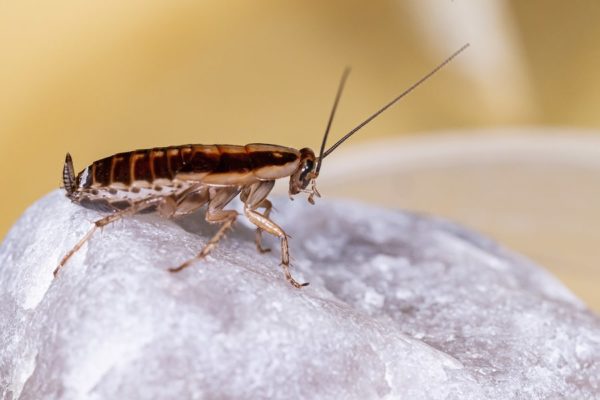
The German cockroach is another easily recognizable cockroach in Georgia. These roaches are tan with dark brown parallel stripes on the back of their upper thorax. They are smaller than their American counterparts with adults measuring about 1/2″ to 5/8″. German roaches can live up to 12 months. This species is also active at night and are often found in kitchens near food and heat supplies from appliances. They also produce more eggs than any other species.
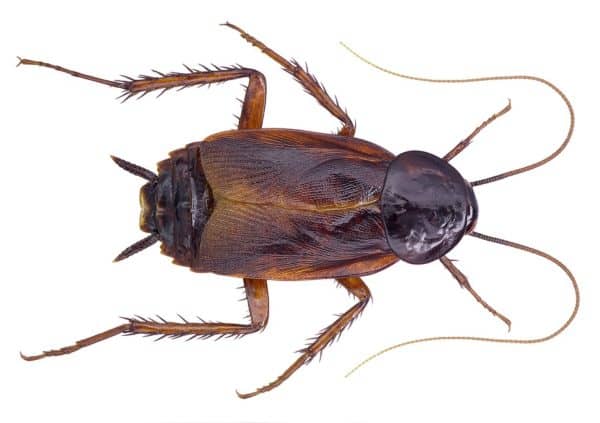
The Oriental cockroach is another common species in Georgia. They are glossy with cherry to black coloring. They are large with adults measuring 1 to 1.25 inches in length. Males have short wings but females are wingless. These roaches can live up to 6 months. Although they often cohabitate with American cockroaches, they are not usually found indoors. Instead they are found outdoors where they feed primarily on decaying matter. They are active at night and have habits similar to their smokybrown cousins.

The Asian cockroach is tan with double parallel strips on their backs. They are often mistaken for German cockroaches. They are a smaller species with adults measuring 1/2″ to 5/8″. These roaches are also found outdoors usually under mulch, leaf litter, or high grass. They usually only come indoors when their outdoor habitat is disturbed. These roaches can fly and are attracted to light.
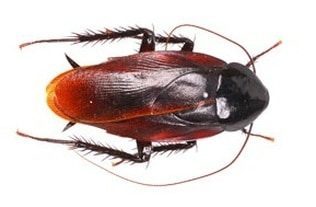
The smokybrown cockroach is dark cherry or red in color. They are large with adults around 1.5 inches in length. They prefer habitats in Southern neighborhoods with mature hardwood trees because they require high humidity and protection from the wind in their shelter. They can often be found in tree holes, attics, crawlspaces, and sheds. They are active at night.
Although you can take some preventative measures to keep roaches out of your home like tidying up, keeping kitchens and bathrooms clean, fixing leaks, and sealing cracks and crevices, they are resilient pests and can often be difficult to eliminate. Contact a professional pest control company who can help properly identify the type of roach(es) you are dealing with, locate points of entry and food and water sources, and effectively and safely eliminate them from in and around your home.
Crane Flies – Are Those Giant Mosquitoes?!
Digger Bee Mounds vs Fire Ant Mounds
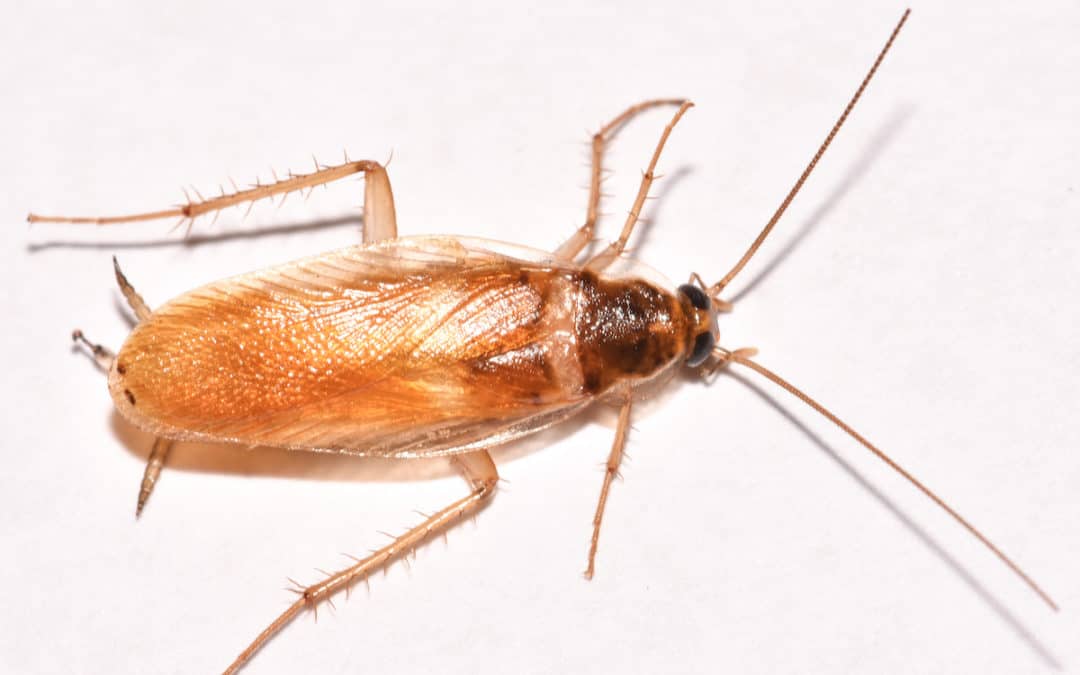
While they aren’t one of the most common cockroach species that are talked about, the brown banded cockroach (Supella longipalpa) can cause problematic infestations like their German and American counterparts. These roaches are one of the smallest species of invasive cockroaches with adults reaching lengths of about 11 to 14 mm. They are found throughout the United States. Brown banded cockroaches are named because of the light brown or tan double bands found on their bodies. These bands are found on the wings of adults and the bodies of the young. They are often confused with German cockroaches.
What attracts cockroaches is pretty simple: food, shelter, and water. These cockroaches need warm temperatures to survive and will often make their way into your home in search of food and shelter. They most often hitch a ride inside on infested furniture (where they often leave their egg casings), grocery items, deliveries, food products, and electronics. Once inside, they are commonly found in living areas where they have access to food supplies and hiding places. They tend to stay in drier locations that are at higher elevations, such as the upper cabinets in kitchens and bathrooms.
When you spot a cockroach in the house one of the first questions people ask is “are cockroaches dangerous?” The answer to that is yes, they can be. Brown banded roaches will feed on anything from trash and food crumbs to nylon stockings and glue. They are known to carry and spread 33 different bacteria, 6 different parasitic worms, and 7 kinds of human pathogens. They pick up these germs on the spines of their legs and bodies and spread them to any surface they touch. They are also known to trigger allergies and asthma in humans.
Once roaches have taken up residence in your home they can proliferate rapidly. They can be quite difficult to eliminate once they are there. The best way to handle roaches of any species is to prevent them from getting indoors in the first place. Check out these cockroach prevention tips:
Cockroaches: A Possible Allergy Trigger
Why Are Mosquitoes Inside My Home?
Mouse vs Rat: Can You Spot The Difference?
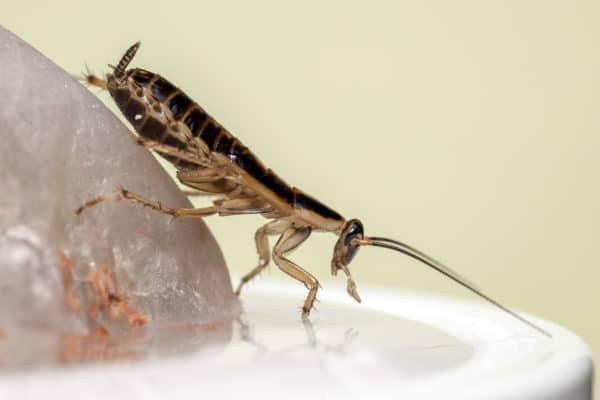
Cockroaches thrive in environments where they have adequate sources of three things: food, shelter, and water. Oftentimes our homes provide ample amounts of each of these which is what attracts cockroaches. The National Pest Management Association (NPMA) reports that 63% of all homes in the US have cockroaches even if the homeowner doesn’t realize they are there.
There are more than 4000 species of cockroaches worldwide. They are nocturnal pests and extremely versatile, adapting to almost any environment, making their populations extremely difficult to control. Roaches can survive up to a week without their heads and up to 30 days without food.
While roaches are nuisance pests in your home and quite unsightly when you stumble across one unexpectedly, are they dangerous to humans? Can they make you sick? Let’s answer these questions and more:
While bites from roaches are extremely rare, they are, in fact, possible. Roaches are typically not aggressive pests and tend to flee rather than fight when faced with a predator. There have been rare instances, however, where roach bites did occur, most often when humans were sleeping or pets were too weak or debilitated to brush them off. Roaches don’t produce any form of poison and cannot sting.
Roaches come from areas that harbor bacteria, such as bathrooms, drains, and dumpsters. They feed on garbage, breed in sewage, and excrete waste over every surface they touch. Roaches are excellent hiders and particularly favor moist and confined areas. Roaches are thigmotropic which means they want to feel contact on all sides of their bodies. Because of this, roaches are commonly found nesting under sinks, in wall cracks, in drains, around water heaters, behind appliances, in cupboards and pantries, under stacks of paper and cardboard, and under undisturbed furniture.
Roaches carry pathogens and microorganisms that can cause disease in humans. In fact, up to 30 different species of bacteria have been discovered on cockroaches. The World Health Organization (WHO) reports that roaches can carry pathogens that cause a variety of diseases including gastroenteritis (with diarrhea, nausea, and vomiting), dysentery, cholera, leprosy, typhoid fever, plague, poliomyelitis, and salmonellosis. Roaches can also exacerbate asthma and allergies through their saliva, feces, and shedding body parts. Roaches produce a protein that can trigger allergic reactions in humans. In fact, studies have shown that about 26% of the US population is sensitive to the German cockroach allergen.
Roaches can be incredibly difficult to control and eliminate. If you have a roach problem, contact a professional pest control company or schedule a free pest inspection now. A pest control technician can thoroughly inspect your home to identify not only where and how roaches are getting into your home, but also the specific type of roaches to better treat and eliminate them, keeping the health of you and your family intact.
Fact or Fiction: Rats Can Make You Sick
Pest Control: Which Pests Are Active in Your Area?
Is Your Hotel on the Bed Bug Registry?
Why Termite Control is Valuable to Your Home
Keep Wildlife in the Wild, Not in Your Home